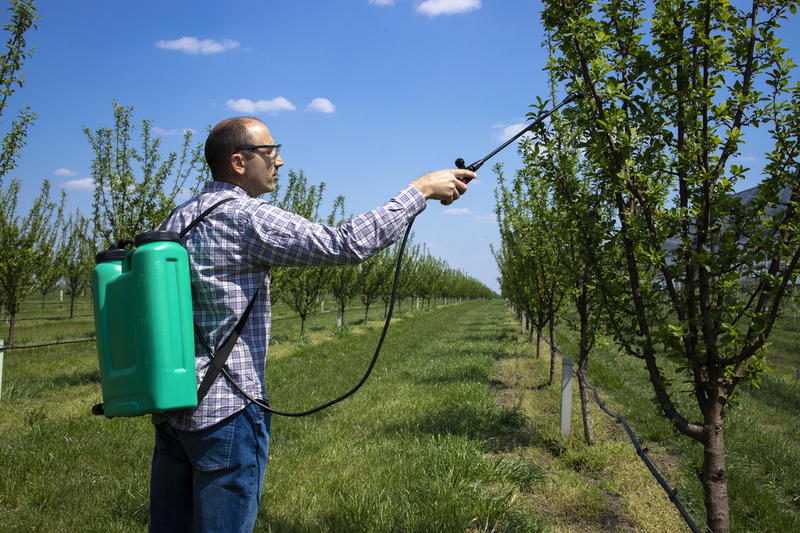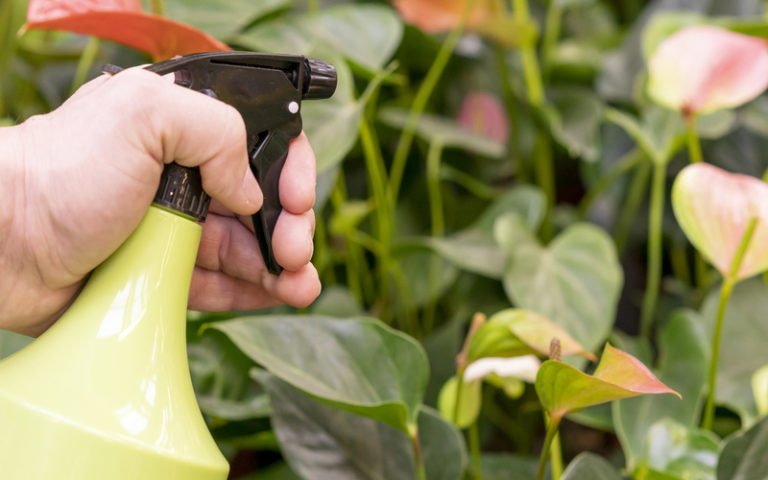Herbicides in Agriculture: Maximizing Crop Yield and Profitability
Herbicides are chemicals that are used to control or eliminate weeds. They play a crucial role in the toolkit of any professional that cares about the well-being and productivity of plants, including farmers, gardeners, and landscapers. There is a wide variety of herbicides available, each one formulated to kill a particular group of weeds or plants.
Types of Herbicides
There are several types of herbicides available on the market, each with its own unique properties and methods of action.
Selective Herbicides:
Selective herbicides are designed to exclusively destroy specific weed types while leaving unharmed the plants you want to maintain. They are frequently used in agriculture to reduce weeds while protecting crops. Since they are made to specifically target enzymes or processes that are particular to certain species of weeds, selective herbicides are successful in controlling weeds.
Non-selective Herbicides:
Herbicides that are non-selective are made to kill any plant they come into touch with, regardless of whether it is a desired plant or not. They are frequently used in landscaping and gardening to remove all the existing vegetation before planting. Non-selective herbicides work well because they target a variety of enzymes or physiological functions that are present in all plants.
Pre-emergent Herbicides:
To stop weeds from developing, pre-emergent herbicides are sprayed on the soil prior to their emergence. They are most effective when used before weed seeds have a chance to sprout since they function by preventing weed seeds from germinating.
Post-emergent Herbicides:
When weeds have developed, post-emergence herbicides are administered. They are meant to eliminate weeds that have already begun to develop by targeting enzymes or processes that are particular to the weed.
Contact Herbicides:
Contact herbicides only destroy plant portions with which they come into touch. They are effective against above-ground weeds, but have little impact on the plant’s roots. Contact herbicides are frequently employed when a rapid kill is required, such as when weeds are growing in pavement cracks or between bricks.
Systemic Herbicides:
Systemic herbicides get into the plant and move to its roots, where they kill the whole plant. They are effective against both above-ground and below-ground parts of the plant and are commonly used to control perennial weeds.
Soil Sterilants:
Soil Sterilants are used to kill all the plants in a certain area for a long time. They are often used in factories or to get building sites ready for construction. Soil Sterilants are applied to the soil and prevent any plant from growing for several months or even years.
People can pick the appropriate herbicide for their weed control requirements by understanding how they function. Always read and follow herbicide labels for safe and efficient usage.
How Herbicides Work
Herbicides function by concentrating on certain proteins, enzymes, or other biological processes that are peculiar to plants. Different herbicides have various ways of killing plants. Here are some typical ways that herbicides function:
Inhibiting photosynthesis:
Photosynthesis is the process by which plants produce energy from sunlight. Some herbicides work by inhibiting this process, which prevents the plant from producing energy and eventually leads to its death.
Disrupting growth hormones:
Growth hormones are essential for the development and growth of plants. Some herbicides work by disrupting these hormones, which leads to stunted growth, distorted leaves, and eventually, plant death.
Disrupting cell division:
In order for plants to grow and reproduce, cells must divide. Certain herbicides function by interfering with cell division, which results in aberrant growth and ultimately causes the plant’s death.
Disrupting protein synthesis:
Proteins are required for plant development and survival. Certain herbicides act by interfering with the creation of particular proteins, causing a breakdown in the plant’s cellular functioning and, eventually, death.
Disrupting lipid synthesis:
Lipids are required for plant cell membranes. Certain herbicides function by blocking lipid production, causing cell membrane damage and, eventually, plant death.
Disrupting root growth:
Roots are essential for the survival and growth of plants. Some herbicides work by disrupting root growth, which prevents the plant from absorbing water and nutrients, eventually leading to its death.
Understanding how herbicides work is essential for using them effectively and safely. It is important to always follow label instructions carefully and to apply herbicides in the correct concentration and at the right time for optimal results.
Common Uses of Herbicides
Herbicides are commonly used for various purposes, including:
Agriculture:
Herbicides are widely used in agriculture to control weeds and other unwanted vegetation that compete with crops for resources such as water, nutrients, and sunlight. Herbicides help farmers achieve higher crop yields by reducing competition from weeds.
Landscaping and Gardening:
Herbicides remove weeds and other plants that make lawns, gardens, and other outdoor spaces appear unattractive. Herbicides destroy specific weeds and plants without harming others.
Forestry:
Herbicides are used in forestry to kill plants that compete with trees and help the trees that are wanted to grow. Herbicides are especially useful for getting rid of invasive plant species that can hurt native trees by outcompeting them and messing up how the ecosystem works.
Industrial and Municipal Sites:
Herbicides are often used on industrial and municipal sites to get rid of weeds and other plants that could be dangerous, hurt infrastructure, or get in the way of operations.
Aquatic Systems:
Aquatic weeds and algae are controlled with herbicides in lakes, ponds, and other bodies of water. Herbicides can be used carefully to destroy just specific types of plants while causing as little harm to fish and other aquatic creatures as possible.
It is critical to use herbicides safely and responsibly by carefully following the label guidelines and not using them in sensitive regions or during severe weather. Herbicide overuse or abuse can harm the environment and pose health hazards to humans and animals.
Benefits of Herbicides
Herbicides have several benefits, including:
Increased Crop Yield:
Weeds and other undesired plants compete with crops for resources like water, nutrients, and sunlight; herbicides help eliminate these threats. By hindering the growth of weeds, herbicides allow farmers to harvest more of their crops. As the world’s population rises, this becomes increasingly crucial.
Cost-Effective:
Herbicides are a cost-effective way to control weeds and other unwanted vegetation. Compared to manual weeding, herbicides can save farmers time, labor costs, and other expenses associated with weed control.
Environmentally Friendly:
Selective herbicides are made to kill only certain weeds or plants without hurting good plants. This makes it less necessary to use harsher methods like plowing or burning. This can help keep soil in place and stop it from washing away, which are both important for keeping ecosystems healthy.
Better Crop Quality:
Herbicides help get rid of weeds, which makes crops better by letting them grow more evenly and consistently.
Reduced Pesticide Use:
By controlling weeds, herbicides can reduce the need for insecticides, which are often used to control pests that are attracted to weedy areas. This can help reduce overall pesticide use and minimize the risks associated with pesticide exposure.
Efficient and Precise:
Herbicides can be used quickly and accurately, so farmers can target specific areas or types of weeds without causing too much damage to the ecosystem around them.
While herbicides have many benefits, it is important to use them responsibly and safely to minimize the risk of environmental damage and health risks for humans and animals.
Environmental Impact of Herbicides
Herbicides can have significant environmental impacts if not used properly. Some of the potential impacts include:
- Soil Degradation: Some herbicides can affect soil quality, leading to reduced fertility and increased erosion. This can have negative impacts on the overall health of ecosystems and agricultural productivity.
- Water Pollution: Herbicides may enter neighboring streams through irrigation runoff or rainfall, possibly polluting aquatic ecosystems and harming fish and other aquatic creatures. This may result in fish fatalities, toxic algal blooms, and other detrimental effects on aquatic environments.
- Non-Target Species Harm: Herbicides can harm non-target plant and animal species, including beneficial insects and pollinators. This can disrupt the balance of ecosystems and have negative impacts on biodiversity.
- Resistance Development: Overuse of herbicides can lead to the development of herbicide-resistant weeds, which are more difficult and expensive to control. This can lead to increased herbicide use and potential negative impacts on the environment.
- Health Risks: Herbicides can cause cancer, birth deformities, and other health problems in humans and animals. To reduce these dangers, apply herbicides cautiously and according to label directions.
Use herbicides responsibly and follow the label. This entails using the correct herbicide for the weed you wish to eliminate, applying it properly, and avoiding sensitive regions and severe weather.
Choosing and Using Herbicides
Choosing and using herbicides involves several important considerations to ensure their safe and effective use. Here are some tips for choosing and using herbicides:
Identify the Weed Species:
It is essential to accurately identify the weed you wish to eradicate in order to select the appropriate herbicide. Utilize a reliable weed identification guide or consult a local agricultural extension agent to identify the weed.
Selecting the Right Herbicide:
Once the weed species is identified, choose the appropriate herbicide based on the weed type, growth stage, and crops in the surrounding area. Make sure to read and follow label instructions carefully to avoid negative impacts on non-target plants or animals.
Proper Application Techniques:
Effective and safe herbicide usage is contingent upon the use of the correct procedures. This involves selecting the proper equipment and nozzle, spraying the solution at the specified rate, and preventing spray drift. Use herbicides under ideal weather conditions and avoid spraying during periods of heavy wind or precipitation.
Safety Precautions:
Always take necessary safety precautions when handling and applying herbicides. Wear protective clothing, such as gloves and eye protection, and avoid inhalation or skin contact with the herbicide. Store and dispose of herbicides properly to prevent accidental exposure or contamination.
Monitoring and Follow-up:
Monitor the effectiveness of the herbicide application and re-treat if necessary. Follow up with proper cultivation practices to reduce future weed growth and minimize the need for additional herbicide applications.
Farmers can keep weeds under control and protect the environment and people’s health by choosing and using herbicides in a smart way.
Conclusion
Herbicides are a good way to get rid of weeds, but you should be careful and responsible when you use them. Proper selection, application, and disposal of herbicides can help ensure their effective
FAQ:
Q: Are herbicides safe for humans?
Ans. Herbicides can pose health risks if they are not used properly. It is important to read and follow all label instructions and use personal protective equipment when handling herbicides.
Q: Can herbicides be used in organic gardening?
Ans. Some herbicides are approved for use in organic gardening, such as those made from natural ingredients like vinegar or corn gluten meal.
Q: How long does it take for herbicides to work?
Ans. The time it takes for herbicides to work depends on the type of herbicide, the plant species being targeted, and the growing conditions.
Q: Can herbicides be used in water?
Ans. Some herbicides are approved for use in aquatic environments, such as lakes and ponds, to control aquatic weeds.
Q: How do I choose the right herbicide for my needs?
Ans. Choosing the right herbicide depends on the type of weeds you are trying to control, the location of the weeds, and the desired outcome. It is important to read the label and understand the active ingredients, mode of action, and application instructions before selecting and using any herbicide.
Q: Are there alternative methods to using herbicides?
Ans. Alternative methods to using herbicides include manual removal, mulching, and using cover crops. These methods can be effective, but may require more time and effort than using herbicides.
Also Read:
Pesticide Residue: Understanding the Impact on Health and the Environment






